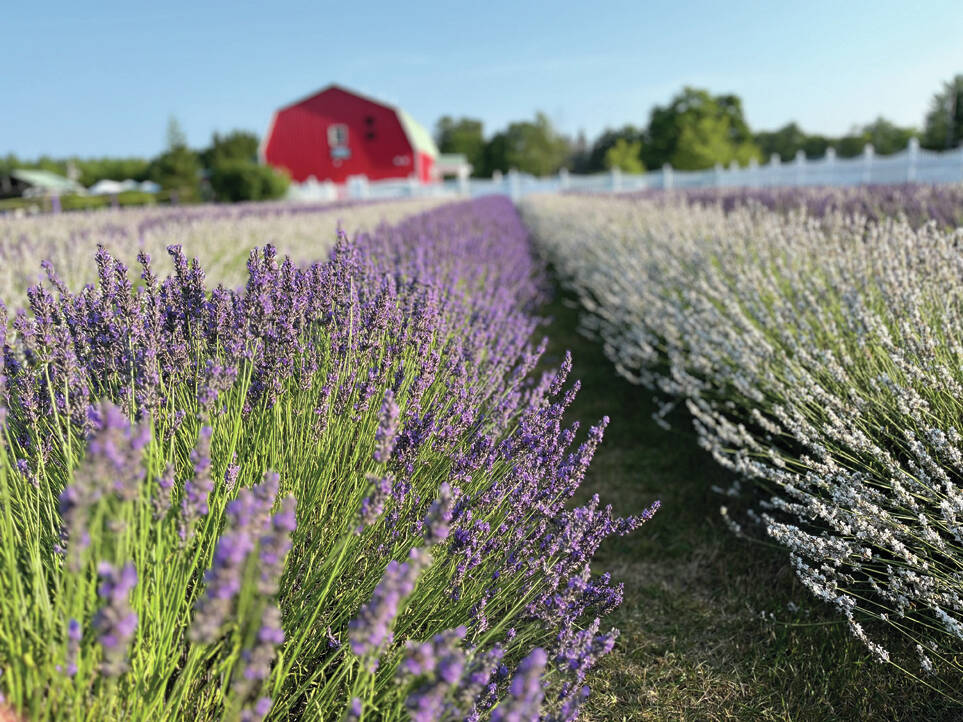|
Only have a minute? Listen instead
Getting your Trinity Audio player ready...
|

Most of us are familiar with the scent of lavender. It is used in cakes and cookies, and commonly found in room sprays, perfume, floor cleaner and bath soap, to name a few uses. After all, its name comes from the Latin verb lavare, meaning to bathe. But there is so much more to this garden shrub!
Interest in growing lavender for commercial production in the United States began in the late 1990’s when several studies showed promise in lavender’s ability to reduce stress, calm nerves, and lift moods. Studies showed that Lavender used in aromatherapy or consumed as tea (consumed twice daily) can be effective in reducing stress and depression.
Another study showed that lavender could also reduce restless leg syndrome.
It has been shown to relieve pain associated with headaches, carpel tunnel, lower back pain, arthritis and pain post-surgery. Lavender is also a strong antimicrobial that may help prevent certain diseases, especially some bacterial or fungal diseases.
In a study published in 2023, a 2% lavender oil concentration improved psoriasis by 64% with no skin irritation. And, at a 10% concentration, 73.67% improvement in psoriasis was achieved, but with a slight skin irritation.
Lavender essential oil should never be consumed or placed directly on the skin. Carrier oils, like olive oil or coconut oil with a few drops of essential oil are used instead. A review of 20 research studies showed lavender oil increased wound healing, promoted the growth of collagen, and boosted the tissue remodeling process of the skin. Thus, lavender certainly shows promise to be very useful in medicinal areas along with its uses in the cosmetic and culinary industries.
Lavender is native to the mountainous areas of countries surrounding the Mediterranean region. It has been adapting to its native regions for thousands of years. This may contribute to the reason it is so picky about garden placement in the United States.
If you would like to grow lavender, the plants are available here in mid to late September or early October. Choosing the right variety is important in growing lavender. Although English lavender, Lavendula augustifolia, is hardy in parts of the country, it will not survive our heat. Instead try Spanish lavender, Lavandula stoechas, or a cross between the English and Portuguese lavender, Lavandula x intermedia, commonly called “Provence.” This last one is a Lavandin, a cross between two true varieties of lavender.
Use raised beds or containers with good drainage and mix pea gravel with a quality potting mix without any fertilizer. The roots cannot take standing water. And be sure it is in full sun. After the first year, you can very lightly trim the plant to shape it, but never give it a hard pruning. Flowers can be deadheaded. Place it in a pot large enough to give it plenty of air space and, hopefully, keep it happy for several years. It is similar to rosemary in its demands.
Lavender buds for making tea will be available Saturday, Aug. 23, at the Farmers Market in McAllen’s Firemen’s Park, located at 201 N. 1st St., just off Business 83, next to Town Lake. This market is under a large, covered area and their summer hours are 8:30 to 11:30 a.m.
Barbara Storz is a local horticulturist who writes about plants that can grow in the Rio Grande Valley. You can find her on Facebook.



